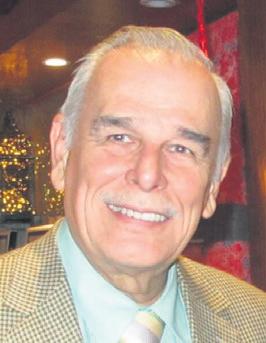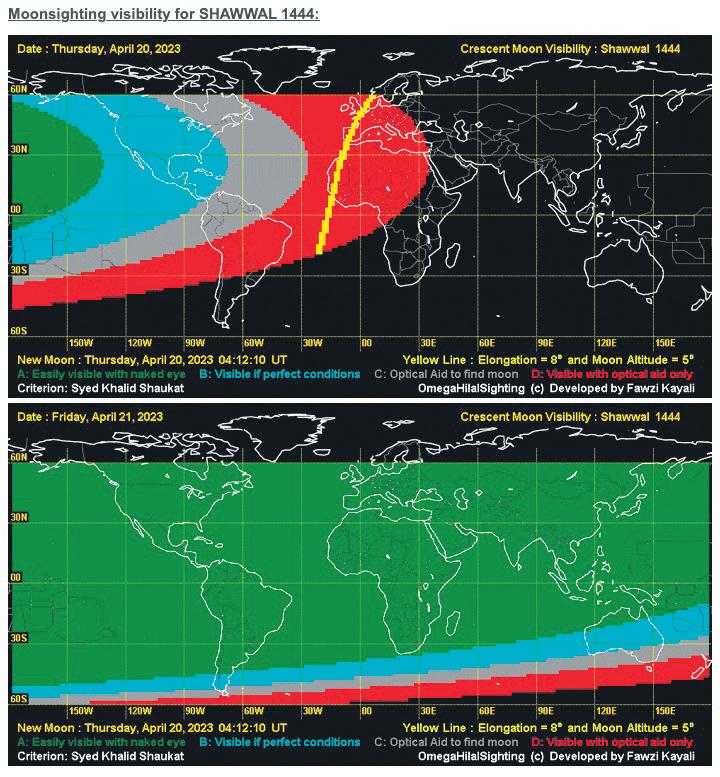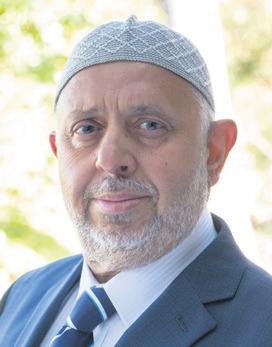
10 minute read
ANZAC, AUKUS and Australia’s future
by AMUST
Fadlullah Wilmot
As a young air force cadet in the 1950’s I stood at the war memorial in Burnie Tasmania with rifle reversed mourning the Australians who died in conflicts overseas. I still mourn those killed in wars every ANZAC Day.
Advertisement
At the war memorial, I wondered about the parents and brothers and sisters and children of those whose names were on the memorial.
I had learnt in school about Simpson and his horse and the mateship and courage of the Anzacs, but I was not aware of that the First World War had, in fact, deeply divided Australia and that the deaths at Gallipoli had galvanised a huge democratic rejection of conscription in which women played a leading role.
It seems that the events at Gallipoli – despite the even greater loss of life on the western front — is the event that Australia looks to for its national moment.
It says something that Simpson and his donkey has come to be seen as the embodiment of the Anzac spirit of selflessness, larrikinism, determination, mateship, humanism, courage, and improvisation.
Interestingly he camped with the 21st Kohat Indian Mountain Artillery Battery and given the nickname Simpson “Bahadur” –the “bravest of the brave”.
For almost 24 days Simpson operated through the impossible conditions and was credited with saving the lives of almost 300 wounded soldiers.
At some point there was discussion of making Anzac Day a day to strive for peace, but this idea was rejected. Likewise in the US Armistice Day became Veterans Day and a justification for the military machine.
In the 1960s people were criticising war culture on Anzac Day. But it was revived, and Australian politicians saw advantage in putting the 1915 Gallipoli landing at the heart of the Australian story — Billy Hughes, Bob Hawke, Kim Beazley, John Howard, Kevin Rudd and Tony Abbott, Scott Morrison.
The one Prime Minister who didn’t was Paul Keating who did not share Hawke’s opinion that Gallipoli was the birthplace of Australian nationhood.
On his first Anzac Day as prime minister, Keating went to Kokoda, where he made a speech implying that the Second World War was more important for Australia than the First:
“The Australians who served here in Papua New Guinea fought and died … died in defence of Australia, and the civilisation and values which had grown up there. That is why it might be said that…the battles in Papua New Guinea were the most important ever fought.”
Anzac Day and Politicians
Upon his election as prime minister in 1996, Howard reinvigorated the Anzac commemorations merging the Anzac legend with his conservative, nationalist policy agenda.

25 April has now become one of the closest things Australia has to a sacred tradition. Even hinting at a criticism of our military heritage can get you into hot water – just ask Yassmin Abdel-Magied.
However, for Keating, “Gallipoli was shocking for us. Dragged into service by the imperial government in an ill-conceived and poorly executed campaign, we were cut to ribbons and dispatched. And none of it in the defence of Australia.”
These words put him into hot water with some but he was right – in fact this badly-managed imperial adventure resulted France and Britain dividing up the Middle East into new colonies over which they installed puppet rulers after signing oil deals.
The carving up of the Ottoman Empire’s Middle Eastern provinces is the main source of the instability in that region to this very day. Sadly Australia, Britain and the US are making the same mistakes that were made 100 years ago.
The landing on Gallipoli was an invasion of foreign soil like the British invasion of Aboriginal land in 1788, says John Lack of the University of Melbourne:
“And we should put the two coves together — Sydney Cove and Anzac Cove — because both invasions were just as bad as each other and cost a lot of lives.’’
Where is the memorial to all the indigenous people killed in the colonisation of Australia? Where is the conversation about how the aboriginal soldiers who fought in both world wars were not given their rights when they returned
A pertinent question on ANZAC Day might be to ask if it should be dominated by politicians and their speeches, or would it be better to use it to reflect on the pain of men, women and children who have suffered as a result of wars and conflicts?
Is it right for the dead of the battlefields of Gallipoli to be used by politicians to justify more military expenditure and more wars especially in areas where it is not in Australia’s national interests?
There was no compelling national interest for Australia to intervene in Vietnam, in Afghanistan or Iraq other than going along with America’s war machine which was also not in America’s national interests.
Anzac and the National Interest
Australia saw itself as part of and dependant on the British Empire until the emergence of the US as the world’s preeminent power.
John Curtin broke with the British to bring back Australian troops to defend Australia and the battles in New Guinea prevented a Japanese invasion of Australia.
Unfortunately, Australian has failed to develop an independent foreign policy designed to promote Australia’s national interest which is greater engagement, and eventual economic and strategic integration with the other countries in our region rather than their (and our) former colonial overlords on the far side of the world.
As Keating has put it, “the area that matters most to Australia, the area that should be our strategic habitat, is the Indonesian archipelago: 250 million people, in an arc across the northern reaches of Australia; a central part of ASEAN. But no; we’re not happy to be in the region. We’re still trying to find our security from Asia, rather than in Asia.”
Hence AUKUS.
For Keating AUKUS is symbolic of a more general cultural cringe, the assumption that Australia can only define itself in relation to London and Washington, rather than take pride in our own Indigenous history and geographic position.
What’s truly shocking about Australia is that its knowledge and understanding of its immediate neighbourhood is remarkably poor. Australia has no idea what a powerful partner ASEAN could be.
Many in Canberra, for example, celebrate Australia’s current closeness with Japan in the Quad. Japan’s economy was eight times bigger than ASEAN’s in 2000. However, it’s now only 1.5 times bigger. By 2030, ASEAN’s economy will be bigger than Japan’s.
By working with AUKUS partners, such as the UK, or with Japan, Australia is betting on the past. It’s certain that the future will be different.
The time has come for Australia to make cold and rational calculations on how to adapt to this Asian century, which will bear no resemblance to the American century.
AUKUS is a walk back to the past, not the future.
Australia is more than ANZAC
Also are not Australia’s achievements more substantial than courage and mateship on the shores of Gallipoli?
It might be more important for us on ANZAC Day to remember that our democratic freedoms — freedom of the press, freedom of assembly, and freedom of speech— were won in battles fought on home soil by courageous women and men who sacrificed much but are still accorded little recognition.
In the first decade of Federation, Australia established parliamentary democracy to serve a federation forged without the war and death that marked nationhood elsewhere.
Australia established women’s’ suffrage; legislated working conditions and minimum wages; built flourishing cities; developed a rapidly growing economy and legislated a social security safety net.
But there were discriminatory laws also like the white Australia policy and the mistreatment of the aborigines and the discrimination against the Afghans and the Chinese who had opened up Australia.
The freedoms and achievements of Australia are for ever under threat and need to be defended as they are under attack and have been weakened by the neo-conservative agenda, the security state, and the Murdoch press.
On ANZAC Day let us also remember those who went to prison for opposing the war and the veterans who returned and spoke out against war. Women were a powerful force.
For example, on August 11, 1914, veteran political campaigner Vida Goldstein as she had done 20 years earlier in mobilising forces around the issue of female suffrage, rallied her own army of foot soldiers with fighting words:
“The time has come for women to show that they, as givers of life, refuse to give their sons as material for slaughter.” She suffered imprisonment for her efforts.
The courageous premier of Queensland T J Ryan, spoke out against military censorship imposed by Billy Hughes on the issue of conscription.
Have we ever heard of Private Rayan? He saw a possibility of ending WWI early with round-table negotiations and a compromise peace, ending what seemed to be an unbreak- able military stalemate.
Had peace come in this way, perhaps there would have been no Communism, no Fascism, no Nazism, no Great Depression, and no Second World War.
Private Ted Ryan from Broken Hill was one of many who rebelled against the war and urged a mediated settlement. He actually sent a letter to Britain’s famous anti-war politician, Ramsay MacDonald, urging him to keep pushing for peace.
Ryan denounced the war as the herding of men to a hideous ‘abattoir’ of industrialised killing! He blasted talk of fighting on to ‘the knock-out blow’. Eventually, Ryan’s revolt landed him in four courts martial. He even received a death sentence.
Were secret diplomatic deals prolonging the war? It is a valid question to ask if promising opportunities for peace were callously rebuffed. From what we know now about the squashing of peace initiatives, Ted Ryan’s instincts were dead right. The Great War was a protracted catastrophe, unnecessarily prolonged.
Lest we Forget
Let me conclude with the prescient words of Paul Keating on Anzac Day in New Guinea in 1992:
“We will continue to remind ourselves –“Lest We Forget”. Legends bind nations together. They define us to ourselves. But they should not stifle us. They should not constrain our growth or restrict us when we have to change. Anzac is a commemoration of the most universal human values. But it does not confer on us a duty to see that the world stands still. The Australians who went to two World Wars, or to Korea, Malaya, Vietnam, went to secure a place in the world for their country and its ideals. The world moves on. Our country must move with it.”
He mentioned a new memorial to the ANZAC legend near Parliament House, inscribed with the words: “Look around you –these are the things they believed in.”
“In the end,” said Keating, “they believed in Australia – in the democracy they had built, in the life they had made there, and the future they believed their country held. Not all generations are called on to risk and sacrifice their lives for their beliefs – but all generations need to believe. On this ANZAC Day it seems appropriate to remind ourselves of our responsibility to renew that faith and loyalty. There can be no better way, surely, to honour those who so gallantly fought and died here.”
Fadlullah Wilmot formerly served at universities in Indonesia, Malaysia and Australia but after the tsunami in Aceh became involved in the humanitarian and development sector. He has worked in Indonesia, Malaysia, Cambodia, Vietnam, Solomon Islands, Bangladesh, Pakistan, Jordan, Lebanon, Sudan, Somalia, Afghanistan and Iraq.
Post-analysis of Eid day determination: 1444 AH/2023 CE
There was almost a 50:50 split for the day of celebrating Eid-ul-Fitr ending the fasting month of Ramadan this year globally between various countries and within Australia itself.
Saudi Arabia, Qatar, United Arab Emirates (UAE), Yemen, Bahrain, Egypt, Palestine, Kuwait, Lebanon, Syria, Sudan, Jordan and Iraq celebrated Eid al-Fitr on Friday 21 April 2023 after the crescent for the month of Shawwal was sighted in Saudi Arabia on Thursday evening.
Turkey and its diaspora worldwide including countries located in the Western hemisphere including UK, Europe and the Americas also celebrated Eid on Friday.
On the other hand, Iran, Oman, Morocco, Libya and countries located in the Eastern hemisphere including India, Pakistan, Bangladesh, Indonesia, Malaysia and New Zealand largely celebrated Eid on Saturday 22 April 2023.
Eid is celebrated on different days due to the differences in the methodology of determining the beginning of the lunar month which is based on the sighting of the crescent in the Islamic calendar.
There are three different methodologies in determining the Islamic dates followed by various Muslim-majority countries and their diaspora in Muslim Minority countries. As an example, we will analyse various scenarios for Ramadan/Eid-ul-Fitr 1444 AH/2023 CE.
1. Global Sighting or prediction of sighting

This methodology is based on the astronomically predicted sighting of the crescent anywhere in the world where that particular date is adopted as the beginning of the first day of the lunar month for the whole world.
Thus for this year the month of Ramadan was determined to be for 29 days starting Thursday 23 March and ending Thursday 20 April with Eid on Friday 21 April.
This scenario was followed by Turkey and its diaspora mosques spread in various countries including Australia.
2. Regional Sighting
This methodology is based on either astronomical prediction of sighting or waiting for the actual news of sighting of the crescent within a country or in neighbouring countries for determining the first day of the lunar month.
Thus for this year Ramadan was 30 days starting Thursday 23 March and ending Friday 21 April with Eid on Saturday 22
April. This predicted scenario was used by The Australian Fatwa Council Chairman and Mufti Dr Ibrahim Abu Mohamad backed by The Australian Imams Council (ANIC) and announcements were made well in advance for the beginning of Ramadan and the day of Eid. Most Arab and South East Asian Muslims usually follow this methodology.
Some individual scholars also used this scenario but waited for an actual sighting of the crescent within the country or the region before commencing fasting on Thursday and completed 30 days of Ramadan to celebrate Eid on Saturday.
3. Local Sighting
This methodology is based on either actual sighting of the crescent in your own country or in close neighbouring countries for determining the first day of the lunar month.
Thus for this year Ramadan for moonsighters was 29 days starting Friday 24 March and ending Friday 21 April with Eid on Saturday 22 April.
This methodology is consistently adopted by Moonsighting Australia and largely fol- lowed by South Asian Muslims.
However, unusually there was a hybrid scenario followed in Australia this year where Ramadan fasting was announced by Lakemba Mosque authorities from Thursday 23 March while Eid was announced well in advance to be celebrated on Friday 21 April.
AFIC and its Dar Al-Ifta Mufti Sheikh Abdul Quddoos Al Azhahi backed by Dar-ul-Fatwa of Lebanon also announced the day of Eid to be on Friday 21 April, a few days in advance.
Various methodologies of the determination of Islamic dates need to be considered as sincere efforts and the differences should be tolerated.
However efforts should be made to develop consensus in adopting a reliable calendar to avoid social and administrative chaos and confusion specially at the time of enjoying Eid celebrations.
This is indeed a challenge to find a workable solution for the Ummah at large.
Zia Ahmad is the Editor-in-Chief of the Australasian Muslim Times AMUST and is based in Sydney.











